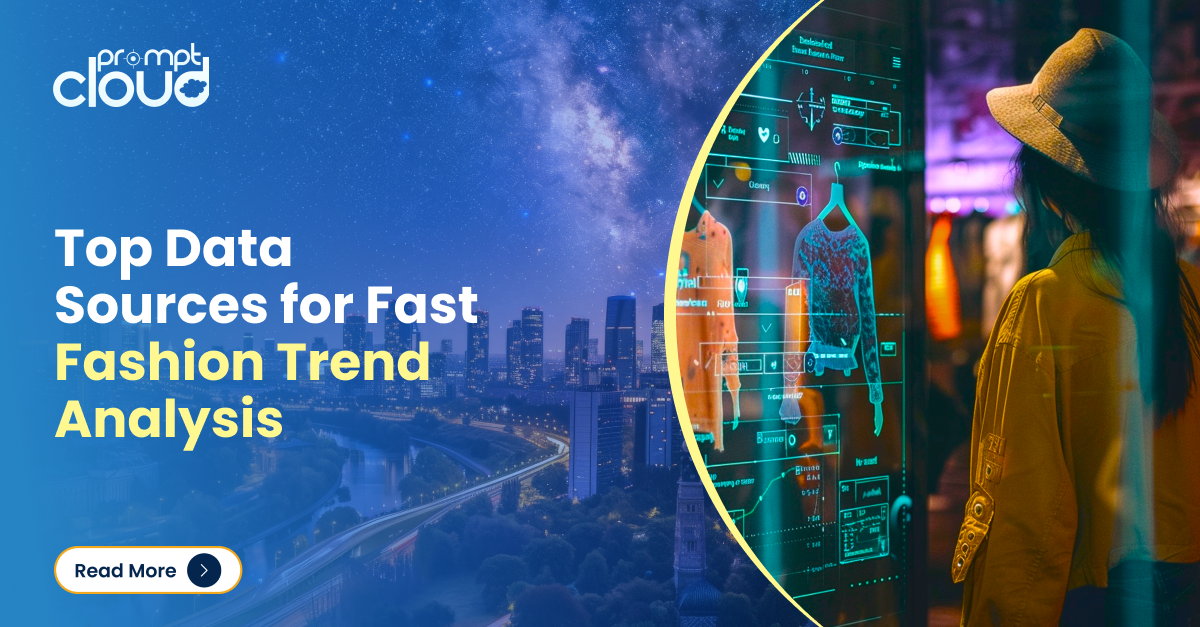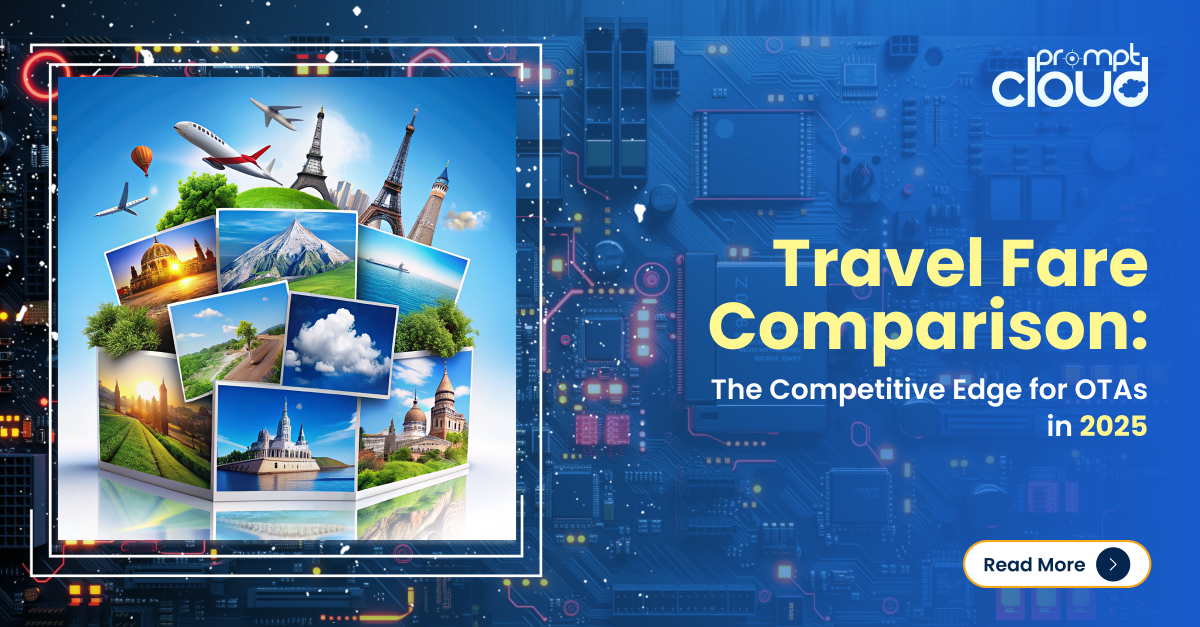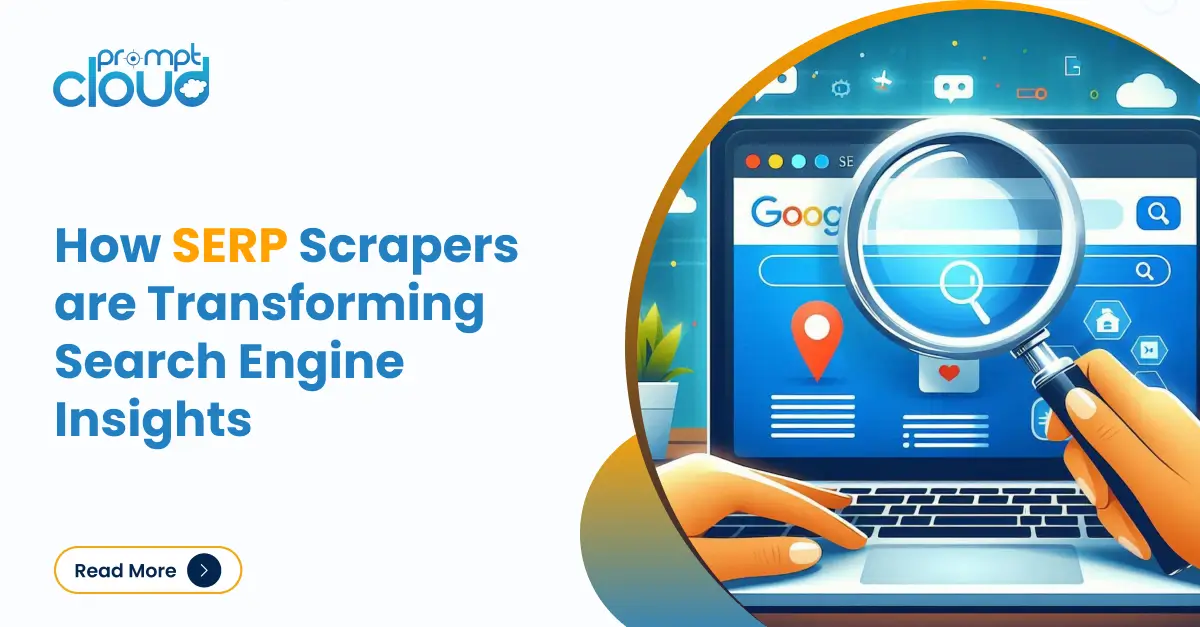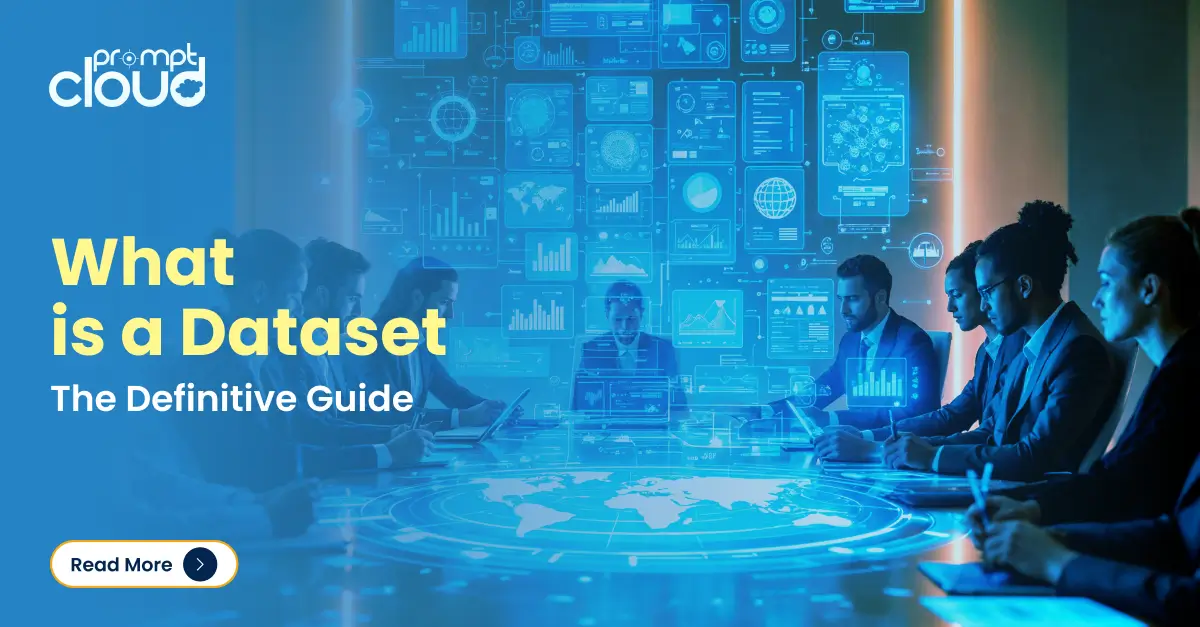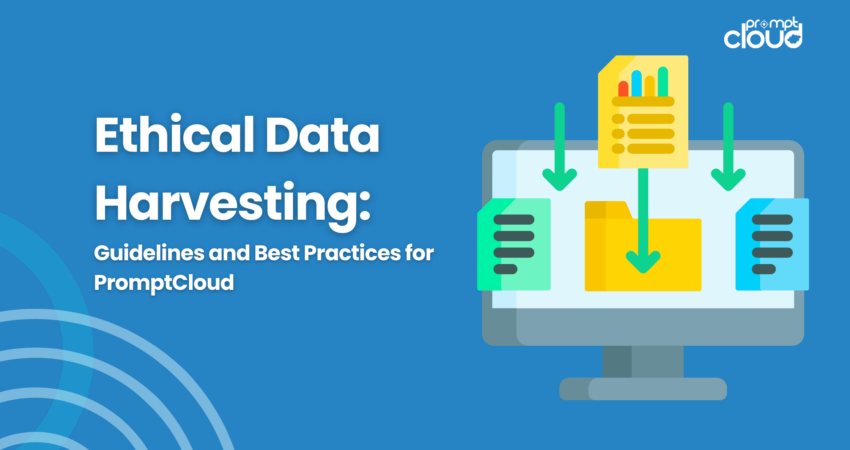
In the era of big data, businesses are increasingly reliant on data harvesting to gain insights and make informed decisions. Data harvesting involves collecting large volumes of information from various online sources, often using automated tools like web crawlers. This process enables companies to analyze consumer behavior, track market trends, and develop strategies that give them a competitive edge.
However, as the volume and velocity of data collection increase, so does the responsibility to engage in ethical data harvesting. Ethical data harvesting ensures that data collection respects privacy rights, complies with legal regulations, and upholds the principles of transparency and accountability. Understanding what does data harvesting mean and how to implement it responsibly is crucial for businesses looking to harness the power of big data without compromising ethical standards.
What is Data Harvesting?
Data harvesting is the process of gathering and extracting data from various sources, typically from websites, for analysis and use in decision-making processes. It involves using automated tools, such as web crawlers, to systematically collect data that can be used to gain insights into market trends, customer behavior, and more. Understanding what data harvesting means is crucial for businesses looking to utilize this practice ethically and effectively.
While data harvesting vs data mining are often used interchangeably, they are distinct processes. Data harvesting focuses on the collection of raw data from external sources, while data mining involves analyzing large datasets to identify patterns and extract meaningful information. Both processes are integral to data-driven strategies, but they serve different purposes within the data lifecycle.
What are the Ethical Considerations in Data Harvesting?
When engaging in data harvesting, businesses must prioritize ethical considerations to maintain trust and compliance. Here are some key ethical guidelines to follow:

- Transparency and Consent
Ensure that data harvesting activities are transparent and that you have obtained necessary permissions or consent where required. Clearly communicate the purpose of data collection and how it will be used to build trust with users and stakeholders.
- Compliance with Legal Standards
Adhere to relevant legal frameworks, such as the General Data Protection Regulation (GDPR), to protect user privacy and data security. Understanding and complying with these regulations is essential to avoid legal issues and ensure ethical data practices.
- Respect for Website Terms
When harvesting data from websites, respect their terms of service and privacy policies. Avoid accessing restricted areas of a site without proper authorization, and honor any requests to cease data collection activities.
- Data Anonymization
Anonymize and aggregate data to protect individual privacy. Avoid collecting personally identifiable information (PII) unless explicitly required and consented to. This approach ensures that data is used responsibly and ethically.
- Minimizing Server Load
Implement rate limiting and other techniques to minimize the impact of data harvesting on website performance. Excessive requests can overload servers and disrupt site operations, so it’s crucial to manage crawling activities responsibly.
What are the Best Practices for Ethical Data Harvesting?
Here are some best practices to ensure that data harvesting is conducted ethically and effectively:
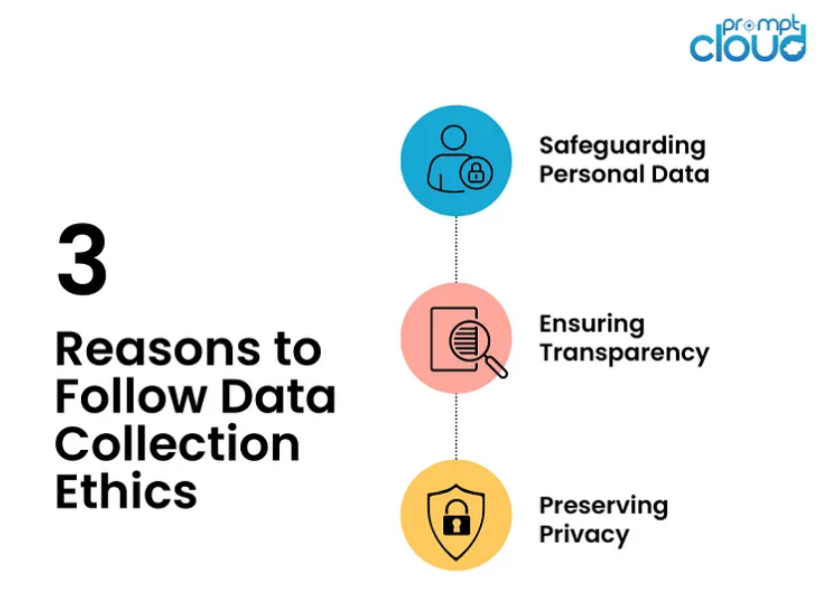
- Define Clear Objectives
Establish clear objectives for data harvesting activities. Understand what information is needed and why it is essential for your business goals. This clarity will guide the process and ensure that data collection efforts are purposeful and aligned with business objectives.
- Use Advanced Tools
Leverage advanced tools and technologies for efficient and accurate data harvesting. Automated web crawlers and data extraction platforms can streamline the process and ensure high-quality data collection while adhering to ethical standards.
- Monitor and Validate Data
Regularly monitor and validate the data collected to ensure accuracy and relevance. Implement data quality checks to identify and correct errors, duplicates, or inconsistencies. High-quality data is essential for making informed decisions and maintaining trust.
- Educate Your Team
Provide training and education to your team on ethical data harvesting practices. Ensure that everyone involved understands the importance of ethics, privacy, and legal compliance in data collection activities.
The Role of PromptCloud in Ethical Data Harvesting
PromptCloud is a leader in web scraping and data extraction services, committed to providing businesses with accurate and timely data while adhering to ethical guidelines. Our expertise in harvesting data allows businesses to access valuable insights without compromising on ethics or compliance.
- Customized Solutions: We offer tailored data extraction solutions that meet specific business needs, ensuring that data collection efforts are aligned with objectives and ethical standards.
- Commitment to Ethics: At PromptCloud, we prioritize ethical data harvesting, focusing on transparency, privacy, and legal compliance. Our goal is to empower businesses with high-quality data that supports informed decision-making.
- Advanced Technology: We use cutting-edge crawling technologies to collect data efficiently and accurately while respecting website protocols and privacy considerations.
Ethical data harvesting is essential for businesses seeking to leverage the power of data while maintaining integrity and compliance. By following best practices and prioritizing ethical considerations, businesses can confidently harness the potential of data harvesting to drive success and innovation.
Schedule a demo to see how our ethical data harvesting solutions can benefit your business.
Frequently Asked Questions
#1: Why do companies data harvest?
Companies engage in data harvesting to gather and analyze large volumes of data for various strategic and operational purposes. Here are the primary reasons why companies engage in data harvesting:
1. Market Research and Competitive Analysis
- Understanding Market Trends: Companies harvest data to gain insights into market trends, consumer behavior, and industry developments. By analyzing this data, they can identify emerging trends, predict future demand, and adjust their strategies accordingly.
- Monitoring Competitors: Data harvesting allows companies to track competitor activities, including pricing strategies, product launches, marketing campaigns, and customer sentiment. This information helps businesses stay competitive and make informed decisions.
2. Personalization and Customer Targeting
- Personalized Marketing: By harvesting data from various sources, companies can create detailed profiles of their customers. This allows them to deliver personalized marketing messages, offers, and recommendations that resonate with individual preferences and behaviors.
- Targeted Advertising: Data harvesting enables companies to segment their audience based on demographics, interests, and behaviors. This helps in creating more effective and targeted advertising campaigns, leading to higher conversion rates and better ROI.
3. Product Development and Innovation
- Identifying Customer Needs: Companies use data harvesting to collect feedback, reviews, and usage data from customers. This information is crucial for understanding customer needs, pain points, and preferences, which can inform product development and innovation.
- Improving Existing Products: Analyzing data on how customers interact with existing products helps companies identify areas for improvement, leading to better product design and functionality.
4. Operational Efficiency
- Optimizing Supply Chains: Data harvested from suppliers, logistics partners, and inventory systems can be used to optimize supply chain operations, reduce costs, and improve delivery times.
- Automation and Process Improvement: Companies harvest data to identify inefficiencies in their operations. By analyzing this data, they can automate repetitive tasks, streamline processes, and enhance overall operational efficiency.
5. Business Intelligence and Decision-Making
- Data-Driven Decisions: Data harvesting provides companies with the raw material needed for business intelligence. By analyzing harvested data, companies can gain insights that inform strategic decisions, such as entering new markets, launching new products, or adjusting pricing strategies.
- Predictive Analytics: Companies use harvested data to build predictive models that forecast future trends, customer behavior, and business outcomes. This helps in proactive decision-making and risk management.
6. Compliance and Risk Management
- Regulatory Compliance: In industries with strict regulatory requirements, data harvesting helps companies monitor and ensure compliance with laws and regulations. This can include tracking financial transactions, customer communications, or employee activities.
- Fraud Detection: Companies harvest data to detect and prevent fraudulent activities. By analyzing patterns and anomalies in data, they can identify potential fraud and take action to mitigate risks.
7. Sales and Lead Generation
- Identifying Potential Customers: Data harvesting is used to gather information on potential leads, such as contact details, company information, and online behavior. This data is then used to generate and prioritize sales leads.
- Customer Relationship Management (CRM): Companies use harvested data to enrich their CRM systems, helping sales teams better understand and engage with their prospects and customers.
8. Content Aggregation and Curation
- Building Content Libraries: Media companies and content aggregators harvest data to compile content from various sources, creating comprehensive content libraries that can be offered to their audience.
- Curating Relevant Content: By harvesting data on trending topics, social media posts, and news articles, companies can curate and distribute relevant content that engages their audience.
#2: What is the difference between data harvesting and data mining?
Data harvesting and data mining are both processes that involve working with data, but they serve different purposes and are distinct in their methods and outcomes. Here’s a breakdown of the differences between the two:
1. Definition and Purpose
- Data Harvesting:
- Definition: Data harvesting, also known as web scraping or data extraction, refers to the process of automatically collecting or extracting large amounts of data from various sources, particularly websites. The goal is to gather raw data that can later be processed, analyzed, or used for various applications.
- Purpose: The primary purpose of data harvesting is to acquire data from external sources, such as websites, social media platforms, APIs, or other online repositories. This data is often unstructured and needs to be cleaned, organized, and stored before it can be analyzed or used.
- Data Mining:
- Definition: Data mining is the process of analyzing large datasets to discover patterns, correlations, trends, and other meaningful insights. It involves applying statistical, mathematical, or machine learning techniques to extract knowledge from data.
- Purpose: The primary purpose of data mining is to uncover hidden patterns, relationships, and insights from data that can inform decision-making, predictions, and strategies. It is often used in fields like marketing, finance, healthcare, and more.
2. Process and Techniques
- Data Harvesting:
- Process: Data harvesting typically involves using software tools or scripts (like web crawlers or scrapers) to automatically navigate web pages, extract specific data points, and store the collected data in a structured format (e.g., CSV, JSON, databases).
- Techniques: Common techniques in data harvesting include web scraping, API integration, and parsing of HTML/XML documents. Tools like BeautifulSoup, Scrapy, or browser-based scrapers are often used.
- Data Mining:
- Process: Data mining begins with a pre-existing dataset, which could be collected through data harvesting or other means. The process involves cleaning the data, transforming it, and then applying analytical methods to identify patterns or trends.
- Techniques: Data mining techniques include classification, clustering, regression analysis, association rule learning, decision trees, neural networks, and more. These techniques are applied using statistical software or programming languages like R, Python, or specialized tools like SAS and RapidMiner.
3. Data Source
- Data Harvesting:
- Source: The data for harvesting is usually sourced from external websites, online databases, social media, or APIs. The data is often unstructured or semi-structured and needs to be gathered first before any analysis can take place.
- Data Mining:
- Source: Data mining typically uses structured data that is already stored in databases, data warehouses, or other repositories. This data may have been collected through various means, including data harvesting, surveys, transaction logs, etc.
4. Outcome and Use Cases
- Data Harvesting:
- Outcome: The result of data harvesting is a large, often raw dataset that can be used for various purposes such as market research, competitor analysis, content aggregation, or as input for further analysis or data mining.
- Use Cases: Examples include collecting product prices from e-commerce websites, gathering social media posts for sentiment analysis, or scraping job listings from recruitment sites.
- Data Mining:
- Outcome: The result of data mining is actionable insights, patterns, or models that can inform business strategies, make predictions, or improve decision-making processes.
- Use Cases: Examples include identifying customer segments for targeted marketing, predicting stock prices, detecting fraud in financial transactions, or discovering trends in consumer behavior.
5. Role in the Data Lifecycle
- Data Harvesting:
- Role: Data harvesting is typically an early stage in the data lifecycle. It focuses on collecting and acquiring raw data from external sources, which can then be used for further processing, analysis, or storage.
- Data Mining:
- Role: Data mining occurs later in the data lifecycle, where the focus is on analyzing and interpreting the data that has already been collected and processed to derive meaningful insights.
#3: What is another word for harvesting data?
Another word for harvesting data is data collection or data extraction. These terms are often used interchangeably with “harvesting data” and refer to the process of gathering data from various sources, such as websites, databases, or online platforms.
Other related terms include:
- Web scraping: Specifically refers to the automated process of extracting data from websites.
- Data gathering: A general term that refers to the act of collecting data from any source.
- Data mining: Though more commonly associated with analyzing data, it is sometimes used loosely to describe the collection phase as well.
- Data acquisition: Refers to the process of acquiring data, often through automated means or from external sources.
- Information retrieval: Refers to the process of obtaining specific information from a larger dataset or collection of sources.
Each of these terms may be more appropriate depending on the context in which the data is being collected or the specific methods used.
#4: What is meant by data harvesting?
Data harvesting refers to the process of automatically collecting large amounts of data from various sources, typically through the use of software tools or scripts. This data can come from websites, online databases, social media platforms, or other digital environments. The primary goal of data harvesting is to gather raw data that can be used for analysis, decision-making, or other applications.
Key Aspects of Data Harvesting:
- Automated Collection:
- Data harvesting is usually an automated process, where software tools, often called crawlers or scrapers, navigate through web pages or other data sources to extract specific information without manual intervention.
- Data Sources:
- The data collected during harvesting can come from a variety of sources, including public websites, social media platforms, APIs, and more. The data may be unstructured (like text from web pages) or structured (like data from a database).
- Use Cases:
- Businesses and organizations harvest data for various purposes, such as market research, competitive analysis, price monitoring, content aggregation, and customer insights. The harvested data is often processed and analyzed to support decision-making or to gain a competitive edge.
- Tools and Techniques:
- Tools used for data harvesting include web scrapers, crawlers, and bots, which are designed to extract specific types of data. Techniques may involve parsing HTML, interacting with APIs, or using machine learning to identify and extract relevant information.
- Legal and Ethical Considerations:
- Data harvesting must be conducted in compliance with legal and ethical guidelines. This includes respecting the terms of service of websites, data privacy laws, and intellectual property rights. Unauthorized data harvesting can lead to legal consequences and reputational damage.
#5: Is data mining ethical?
The ethics of data mining depend on how it is conducted, the type of data being mined, the purposes for which the data is used, and the transparency involved in the process. Here’s a breakdown of the key ethical considerations surrounding data mining:
1. Informed Consent
- Ethical Practice: It is important to obtain informed consent from individuals before collecting and mining their personal data. This means that individuals should be aware of what data is being collected, how it will be used, and who will have access to it.
- Unethical Practice: Mining personal data without the knowledge or consent of the individuals involved is considered unethical, as it violates their privacy rights.
2. Data Privacy
- Ethical Practice: Protecting the privacy of individuals whose data is being mined is crucial. This includes anonymizing data to prevent the identification of individuals, and ensuring that sensitive information is not disclosed or misused.
- Unethical Practice: Data mining that exposes or exploits personal information, especially without adequate protection or safeguards, is unethical. This includes selling or sharing personal data without consent.
3. Transparency and Accountability
- Ethical Practice: Organizations that engage in data mining should be transparent about their data practices, including what data they collect, how it is mined, and for what purposes it is used. They should also be accountable for any harm that may result from their data mining activities.
- Unethical Practice: Lack of transparency, such as not informing individuals about data mining activities or failing to disclose how data will be used, is unethical. This can lead to mistrust and potential harm.
4. Purpose and Use of Data
- Ethical Practice: Data mining should be conducted for legitimate and beneficial purposes, such as improving services, advancing research, or providing insights that benefit society. The use of mined data should align with ethical standards and contribute positively to society.
- Unethical Practice: Using data mining for harmful purposes, such as discrimination, manipulation, or exploitation, is unethical. For example, using mined data to unfairly target vulnerable populations or to create biased algorithms is considered unethical.
5. Bias and Fairness
- Ethical Practice: Data mining should be conducted in a way that avoids introducing or perpetuating biases. This includes ensuring that data sets are representative and that algorithms are designed to be fair and equitable.
- Unethical Practice: If data mining leads to biased outcomes, such as reinforcing stereotypes or excluding certain groups, it is unethical. This can occur if the data set used for mining is biased or if the algorithms are not carefully designed.
6. Legal Compliance
- Ethical Practice: Data mining must comply with relevant laws and regulations, such as data protection laws (e.g., GDPR, CCPA). Ethical data mining respects legal standards and the rights of individuals.
- Unethical Practice: Ignoring legal requirements, such as mining data that violates data protection laws or breaching contractual agreements, is unethical and illegal.
7. Impact on Individuals and Society
- Ethical Practice: Consideration should be given to the broader impact of data mining on individuals and society. This includes assessing potential risks and benefits and ensuring that the positive outcomes outweigh any negative consequences.
- Unethical Practice: Data mining that causes harm, such as invading privacy, contributing to social inequality, or leading to misuse of data, is unethical.













